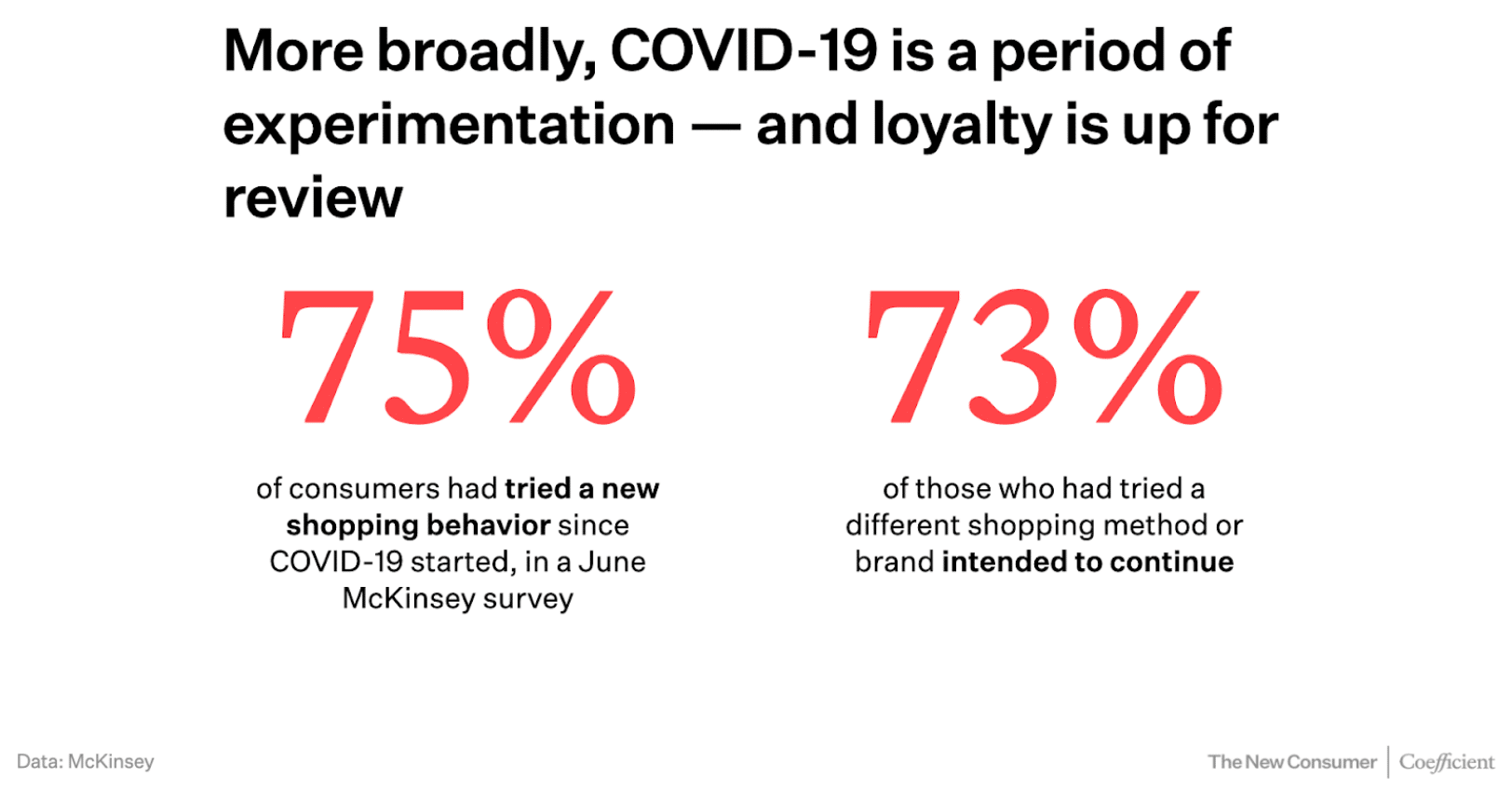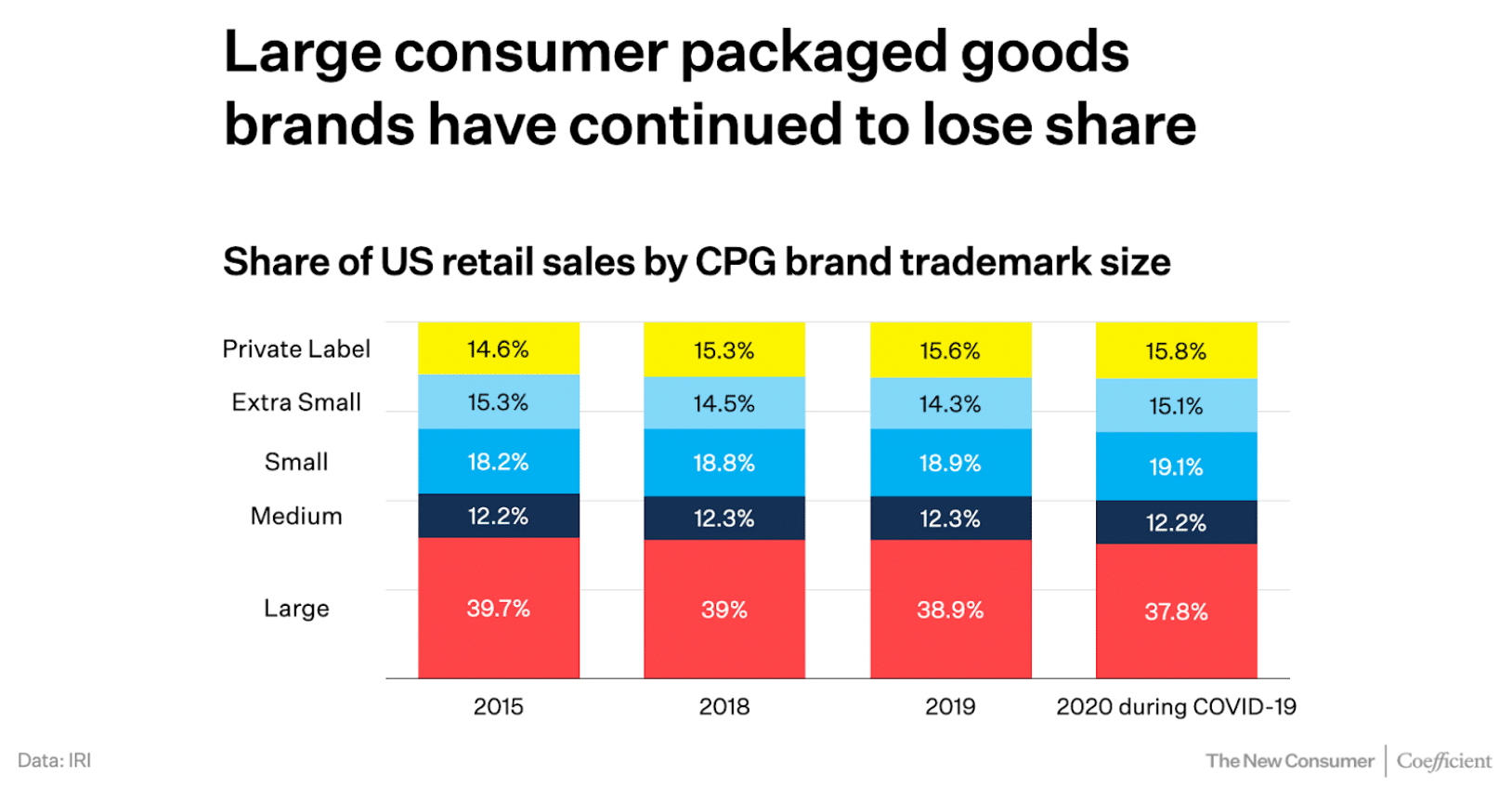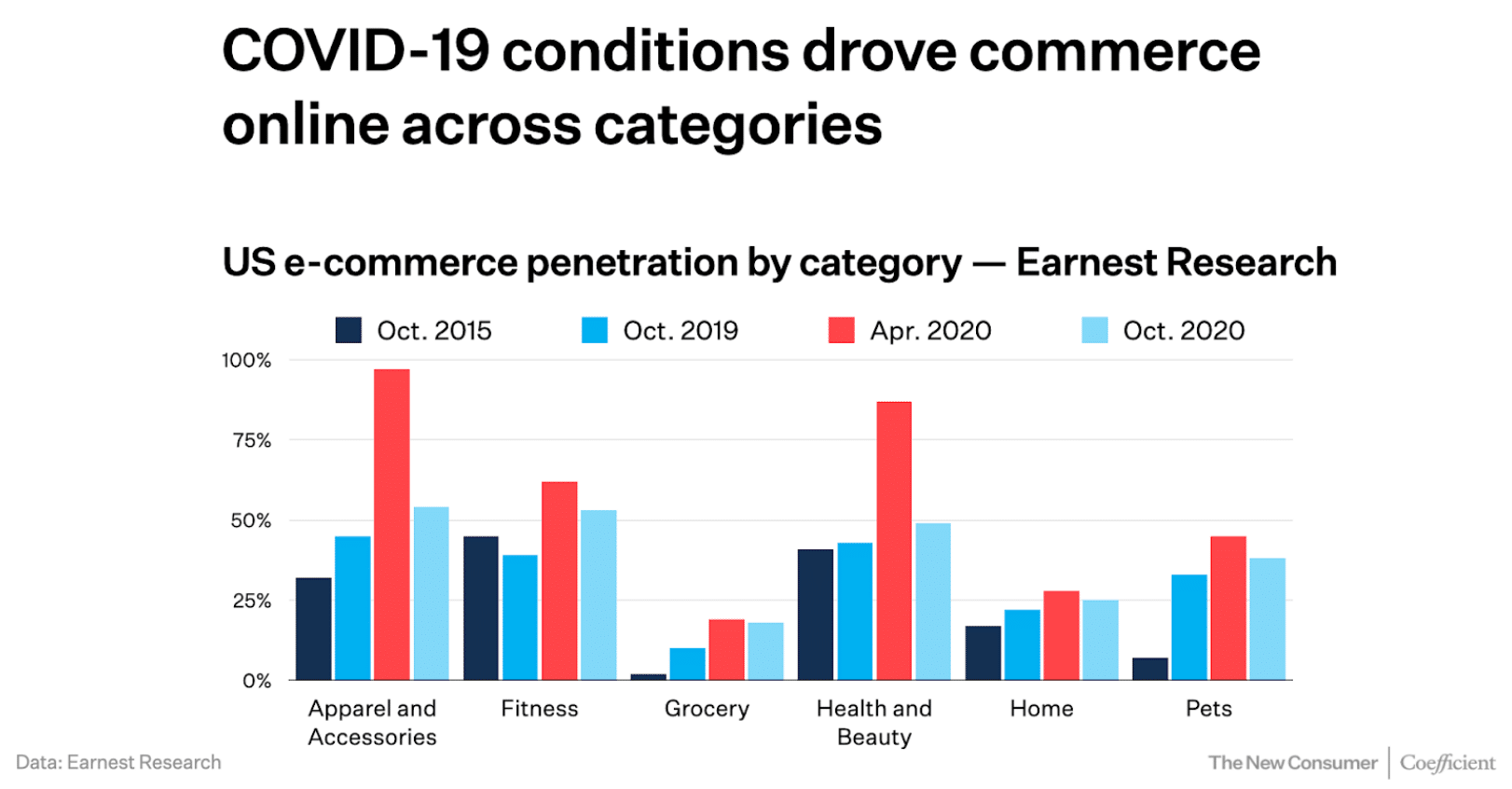It’s finally over! But even though 2020 is now in the history books, be assured there were plenty of consumer behavior changes that will carry over to the new year, and quite likely into the indefinite future. New research from venture capital firm Coefficient Capital and spending-focused publication The New Consumer examines examining consumer behaviors that were forever changed by COVID-19.
The new Consumer Trends 2021 report is based on a survey conducted in November 2020 asked consumers about their spending habits, consumption patterns and other behaviors related to food & beverage, fitness, alcohol and beauty. Earnest Research, a data analytics firm, also provided custom data on consumer spending and foot traffic for the report.
The report finds that a majority of consumers have adopted new behaviors that they prefer—even as we head into 2021 and vaccines become more readily available—with billions of dollars’ worth of spending at stake.
“The COVID-19 pandemic accelerated many consumer trends that had been set in motion years ago, including online grocery shopping and at-home fitness,” said Franklin Isacson, founding partner at Coefficient Capital, in a news release. “Consumers now prefer many of these behaviors and don’t want to give them up. Brands will have to make long-lasting changes if they want to succeed in 2021 and beyond.”
“The charts from 2020 are some of the most dramatic I’ve ever published,” said Dan Frommer, founder and editor in chief of The New Consumer, in the release. “Our goal was to make it easy for people to understand the trends that actually matter, in a slide deck that’s worth bookmarking.”
Some of the key findings include:
COVID-19 drove record e-commerce sales this year and forced new lifestyles and habits. Consumers prefer many of their newly adopted behaviors, suggesting they will continue beyond the pandemic:
- 52 percent of Millennials and 44 percent of Gen. Z prefer online grocery shopping.
- 81 percent of Millennials and 50 percent of Gen. Z prefer working out at home.
Online grocery adoption hit an inflection point in the US in 2020, more than twice its initially predicted volume. And it’s poised to accelerate, further transforming a $1 trillion industry:
- 36 percent of Gen. Z and 30 percent of all consumers say they’ve been shopping for food and beverage online more during COVID-19.
- Consumers are unbundling their shopping carts, spending with internet-native grocers, delivery apps, and directly with brands. About one fifth of consumers say they prefer to buy food and beverages directly from brands’ websites.
Consumer behavior in beauty and skincare has fundamentally changed, favoring more and smaller brands:
- Younger consumers are unbundling the legacy beauty industry and using more brands: 48 percent of Gen. Z say they use four or more brands in their beauty routines, compared to 23 percent of the Baby Boomer generation.
- Beauty brand preferences vary by generation: Gen. Z consumers reported using Anastasia Beverly Hills, Fenty, and Kylie, while Millennials reported using Glossier, Charlotte Tilbury, and ILIA.
Home fitness is now the default, and looks like it’s here to stay, with $100 billion in global health club spending up for grabs:
- 82 percent of Millennials and 76 percent of all consumers say they’ve switched to exercising more at home during COVID-19.
- 81 percent of Millennials and 66 percent of all consumers say they prefer it.
Americans love their hard seltzer, and low- and no-alcohol drinks have become part of many COVID-era routines:
- 45 percent of Millennials say they’ve been drinking hard seltzer during COVID-19.
- 36 percent of Millennials say they’ve been drinking canned cocktails.
- 24 percent of Millennials say they’ve been drinking non-alcoholic beer.
- 22 percent of Millennials say they’ve been drinking non-alcoholic spirits.
The future of consumer starts small:
- Emerging communities that were initially considered niche, such as keto and plant-based, now have followings in the millions.
- 12 percent of Americans said they had tried the keto diet in the past two years, according to previous Coefficient Capital research.
- Oat milk was the fastest growing food category at retail during COVID-19, according to Nielsen.
- 30 percent of Gen. Z and Millennials have tried oat milk in the past six months.
Download the full report here.
The report is based on extensive research from a range of proprietary and public data sources. Coefficient Capital and The New Consumer worked with Toluna, Inc. to survey 3,500+ US consumers on their shifting behaviors resulting from the COVID-19 pandemic.






